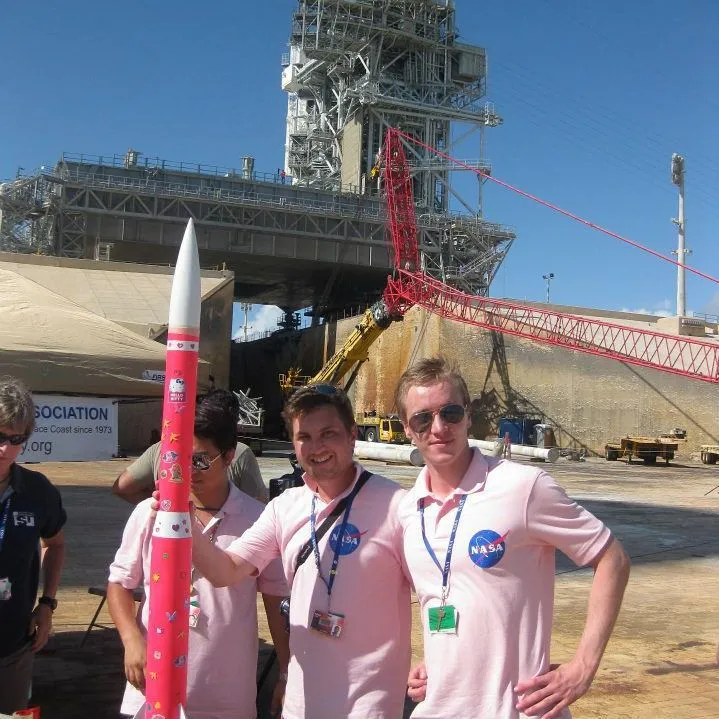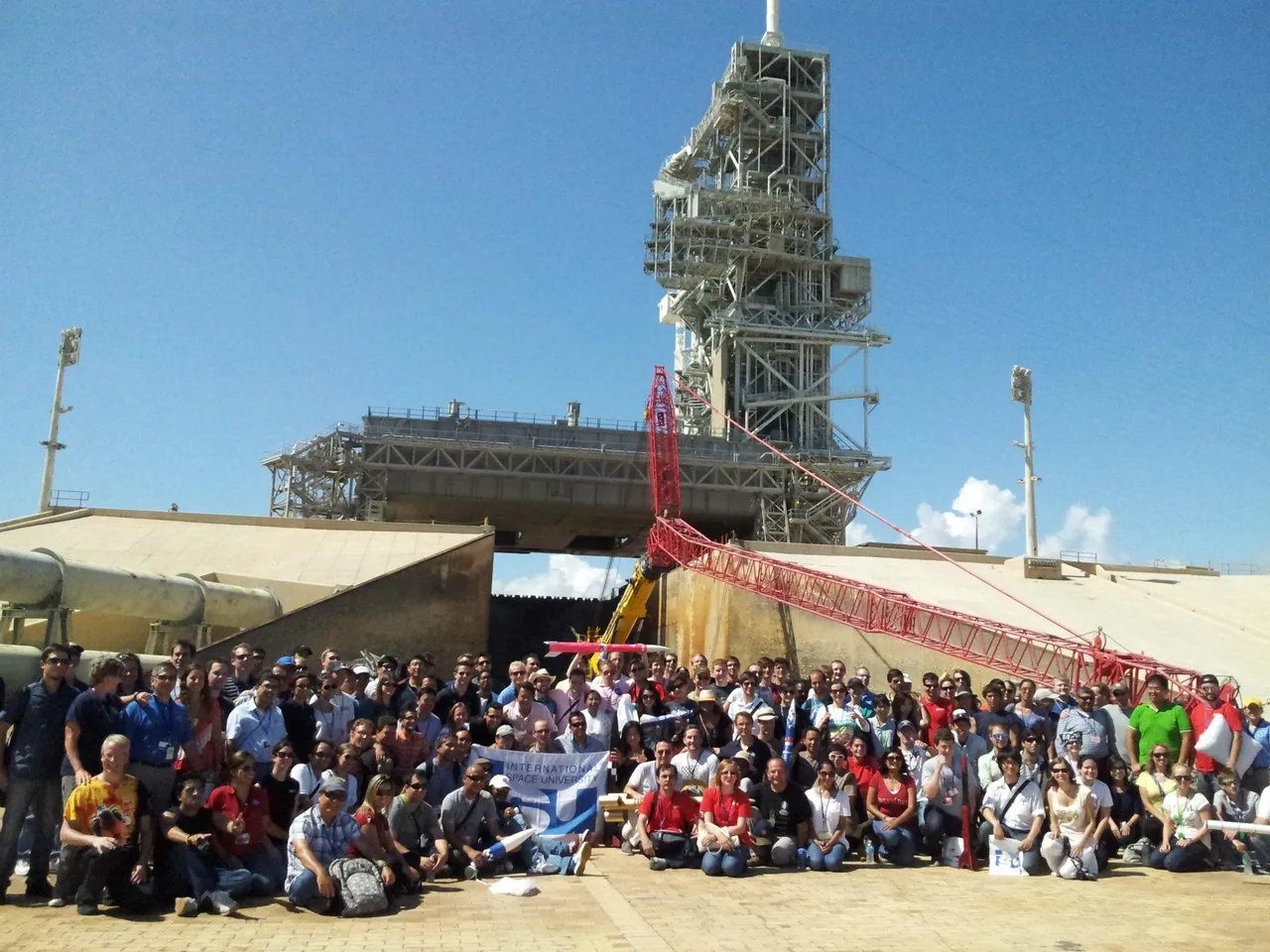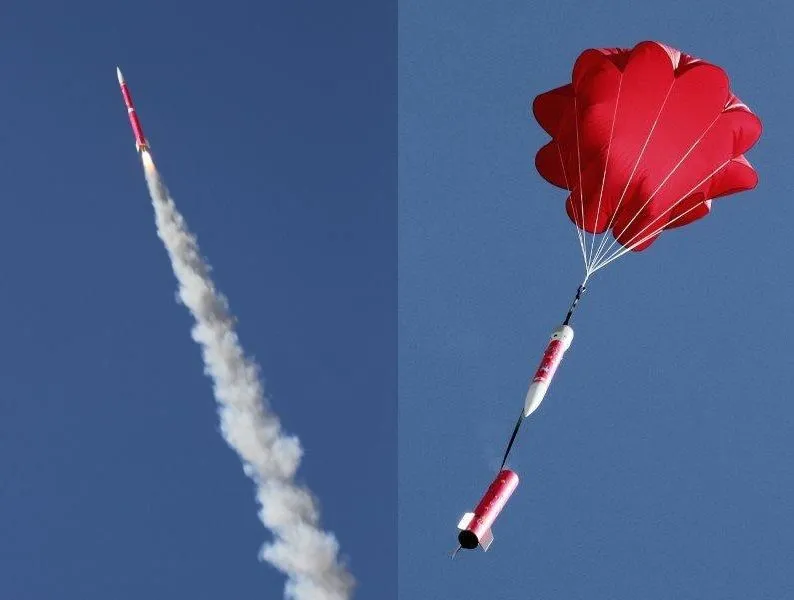Launchpad 39A at the NASA Kennedy Space Center has been used for the Apollo program (including Apollo 11), the Space Shuttle Program, and SpaceX’s most recent launches. Oh, and also for My Little Rocket, a student rocket I built as part of the Space Engineering and Rocket Science Department at the International Space University on the 14th of July 2012!
Since today is the 5 year anniversary of that event, which still is the most fun day of my life, I thought I would share the story and some images! Enjoy :)

Me and my team mates from China and Austrialia in front of Launchpad 39A
In the department, our final exam was to design, build and launch our own rocket. It’s success criteria were to bring a raw egg and a 0,5kg crystal to an altitude as close as possible to 1000 feet, with a total airtime as close as possible to 50 seconds, while keeping the egg whole! A demanding task for an (almost) 22 year old Economics student with only high-school physics and an introduction course in rocketry in the baggage. However, as someone who has never turned away from challenges, but instead embraced opportunities to gain new skills, it was an amazing experience!

All participants in the 2012 Space Studies Program of the International Space University together in front of Launchpad 39A
I expect one-half of you are curious about how we went about doing the design of the rocket, how we decided on what engines to use, how we ensured that the rocket would split at the right time to allow the parachute to come out, etc. While the other half of you are just wondering how high we had to be to come up with this design. The truth is, while the main focus was to deliver upon the set targets, we were also told that the other participants would be voting on which rocket they thought had the best looking design. So, keen on winning as I always am I went out and asked participants what they would love to see. Now, if you’ve seen what popular votes tend to result in – such as the 200 million USD Research ship being names “Boaty McBoatface – you would see this coming. You can imagine me the next day scrolling through Walmart with a trolley, picking off the shelf anything pink and girly that I could find. Pink and White spray paint. Stickers with hearts, Hello-kitty, peace symbols and birds, glitter in all the colours of the rainbow. Pink polos. I’ve always thought that when you try to make a joke that will inevitably make a fool of yourself you have to go all in. And we sure did.

On the left: Myself inserting our Space Unicorn mascot inside the rocket (she came down safely with the parachute!). On the right: Our Department head, a rocket scientist at NASA’s Johnson Space Center in Texas, with their less impressive rocket (a scaled down model of NASAs new Space Launch System SLS)
The launch-day is still one of my most fond memories. It was both fun, exciting, educating and memorable. How often does anyone get to walk on the same launch complex used for the Apollo program? Let alone do their own little launch at the facilities? The press was also present from 9 different TV-channels and space magazines. I gave a short speech about how our imagined company Unicorn Galactic were on a mission to spread peace and love throughout the Universe, as well as some technical insight about how the rocket was powered by children’s laughter and happy pandas. As well as the fact that the engine flew on rainbow-power. Chosen because it’s more environmentally friendly. Parts of it found its way to NASA.gov’s own pages in the educational section.

”Fredrik Aarrestad of Norway said his team built its pink rocket, named "My Little Rocket," to show the peaceful uses advanced technology can be employed for. The team included a small, purple stuffed Unicorn in their rocket, the mascot of Unicorn Galactic.”
source: nasa.gov
In the end, our Rocket reached an altitude of ~700 feet and came back down after just under a minute. The egg was also nice and whole following a successful deploy of the parachute. Due to the wind being stronger than anticipated, our launch had to go at some degree less than 90 towards the direction of the wind to ensure good stability of the rocket. Resulting in a lower altitude than our target. A very respectable result nonetheless!

"My Little Rocet" in the air above NASA Kennedy Space Center
The parachute came out 8 seconds after launch together with a load of glitter colouring the sky for a brief moment to our audience's amucement! While our score ranked 4th out of 9 launches (which I was really happy with!) we absolutely crushed the design competition! I think two of the lessons learned is that 1. You can take on a lot of challenges that you don't neccessarily feel prepared to take on if you have the neccessary curiosity to learn and the people around you that can give you the support you need. 2. If you ask the internet or your friends about how they want you to paint your car, boat, house or rocket, you should expect the worst, and be prepared to make a fool of yourself for their amusement ;)
So to conclude:

Hope you found this blog post fun and interesting to read!
Thank you for reading this far! My next posts will likely be:
- “My conversations with 25 Astronauts, and what it taught me about life, our planet, and much more”
- "Beautiful Satellite images you won't believe are real #2"
- "A day of work at the European Space Agency - suesas-sciencechallenge"